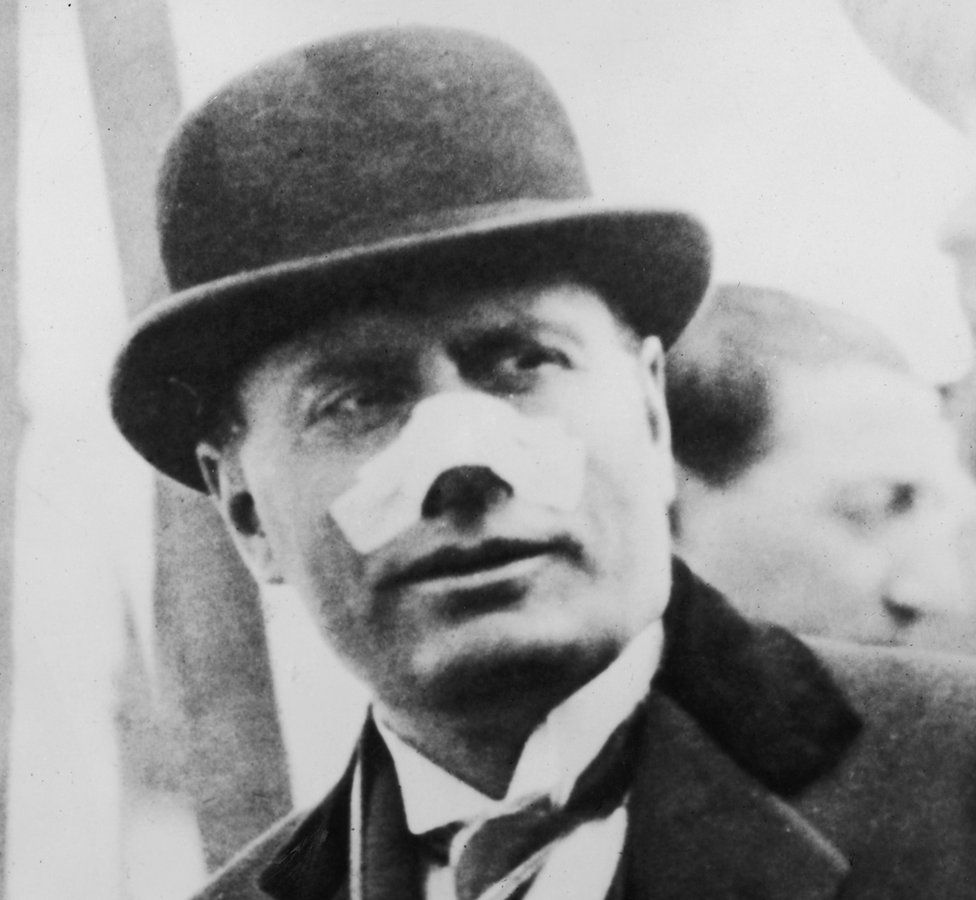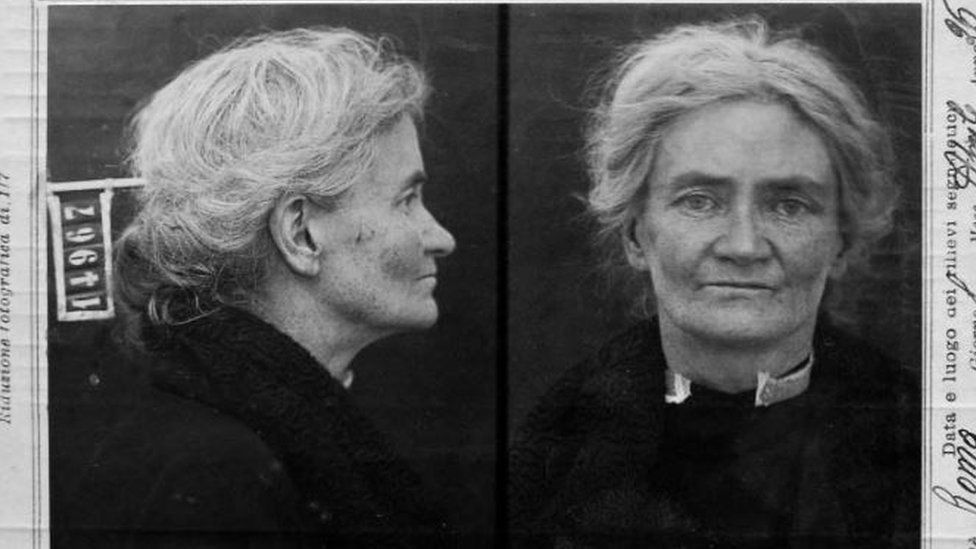IRELAND-Violet Gibson: Plaque to be erected to Irish woman who shot Mussolini
A plaque commemorating an Irish woman who came within inches of killing Benito Mussolini has been approved by a Dublin council committee.
One of the bullets fired by Violet Gibson grazed the Italian leader's nose.
The memorial is set to be erected at 12 Merrion Square, the site of her childhood home.
Independent Mannix Flynn proposed the motion, and it was passed by the Commemoration and Naming Committee.
The committee passed the motion unanimously.
Violet Gibson's assassination attempt was made on 7 April 1926, when she was 50 years old.
She came from a privileged Anglo-Irish background, and had been a debutante in the court of Queen Victoria.
Following the attempted shooting, she was returned to England, and spent the rest of her life in St Andrew's Hospital, a mental asylum in Northampton, until her death in 1956.
While her story had fallen into obscurity, a recent book, film, and radio documentary have seen it brought to greater prominence.
The original council motion stated the "committed anti-fascist" should be brought into "the public's eye and given her rightful place in the history of Irish women and in the rich history of the Irish nation and its people".
"It suited both the British authorities and her family to have her seen as 'insane' rather than as political," the motion adds.
'It's been an emotional moment'
Speaking to BBC News NI, Mr Flynn said the vote had been "an emotional moment" and that he remembered "speaking to my mother about poor Violet Gibson when I was a child".
"It has taken a hell of a long time to bring Violet Gibson into the light," he said.
"She must have been one of the longest-serving political prisoners, and it has taken this long for her to be brought back to prominence."
Mr Flynn said discussions were ongoing with the owners of the building, and that he expected some progress to be made in the coming weeks - although it could be dependent on Covid-19 restrictions.
The owner of 12 Merrion Square is Westill, a British real estate company.
In 2014, the story of Ms Gibson was brought to wider audience by a radio documentary broadcast by RTÉ, made by Siobhán Lynam, and drawing on the book 'The Woman Who Shot Mussolini', by Francis Stoner-Saunders.
The documentary subsequently served as the basis of the film 'Violet Gibson, The Irish Woman Who Shot Mussolini', which was directed by Ms Lynam's husband, Barrie Dowdall, and is currently being shown at film festivals internationally.
"People would go on pilgrimages to have tea with Mussolini, and a woman, and a 50-year-old woman at that, she shot him at point blank range," said Ms Lynam.
Who was Benito Mussolini?
Mussolini's National Fascist Party came to power in Italy in the aftermath of World War One, backed by armed groups known as blackshirts who intimidated opponents.
The Fascists seized power in the early 1920s, dismantling democratic institutions, and Mussolini became Italy's dictator in 1925.
He supported Gen Francisco Franco in Spain's civil war and backed Adolf Hitler in World War Two.
Mussolini adopted some of Hitler's policies - notably the anti-Jewish laws of 1938 that stripped Italy's Jews of their civil rights. More than 7,500 Italian Jews died in the Holocaust.
Mussolini was executed after his capture by Italian partisans in 1945, while attempting to flee the Allied advance.




Comentarios
Publicar un comentario